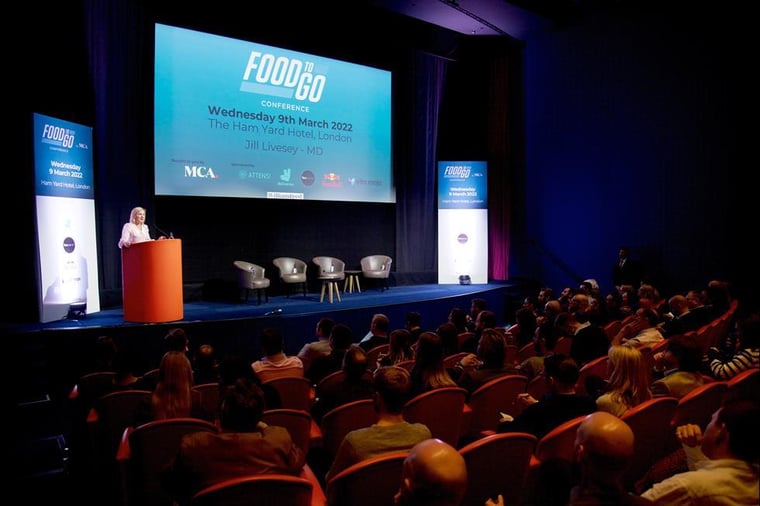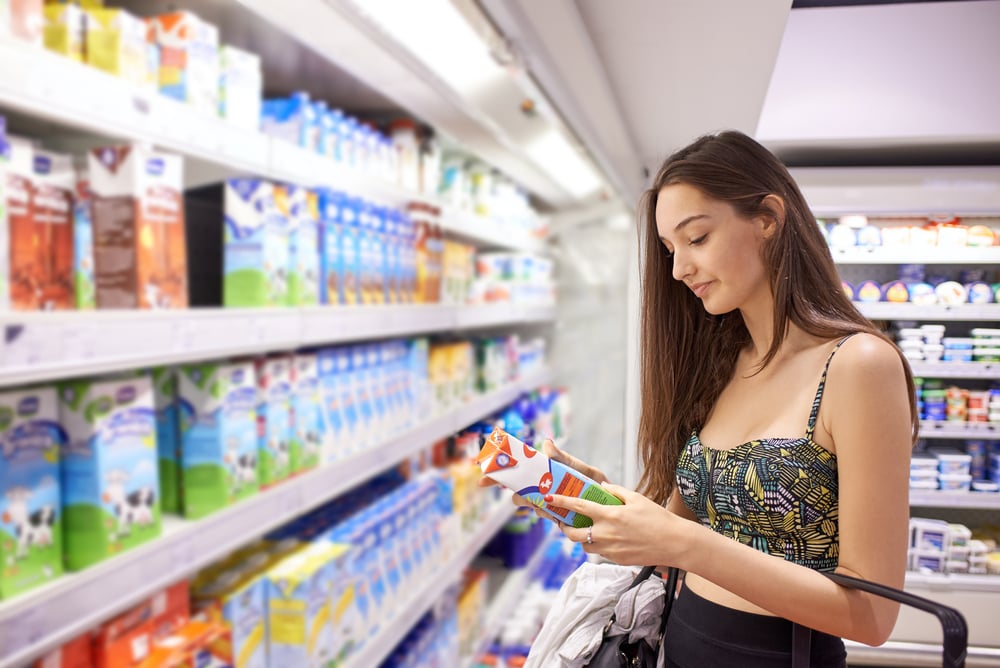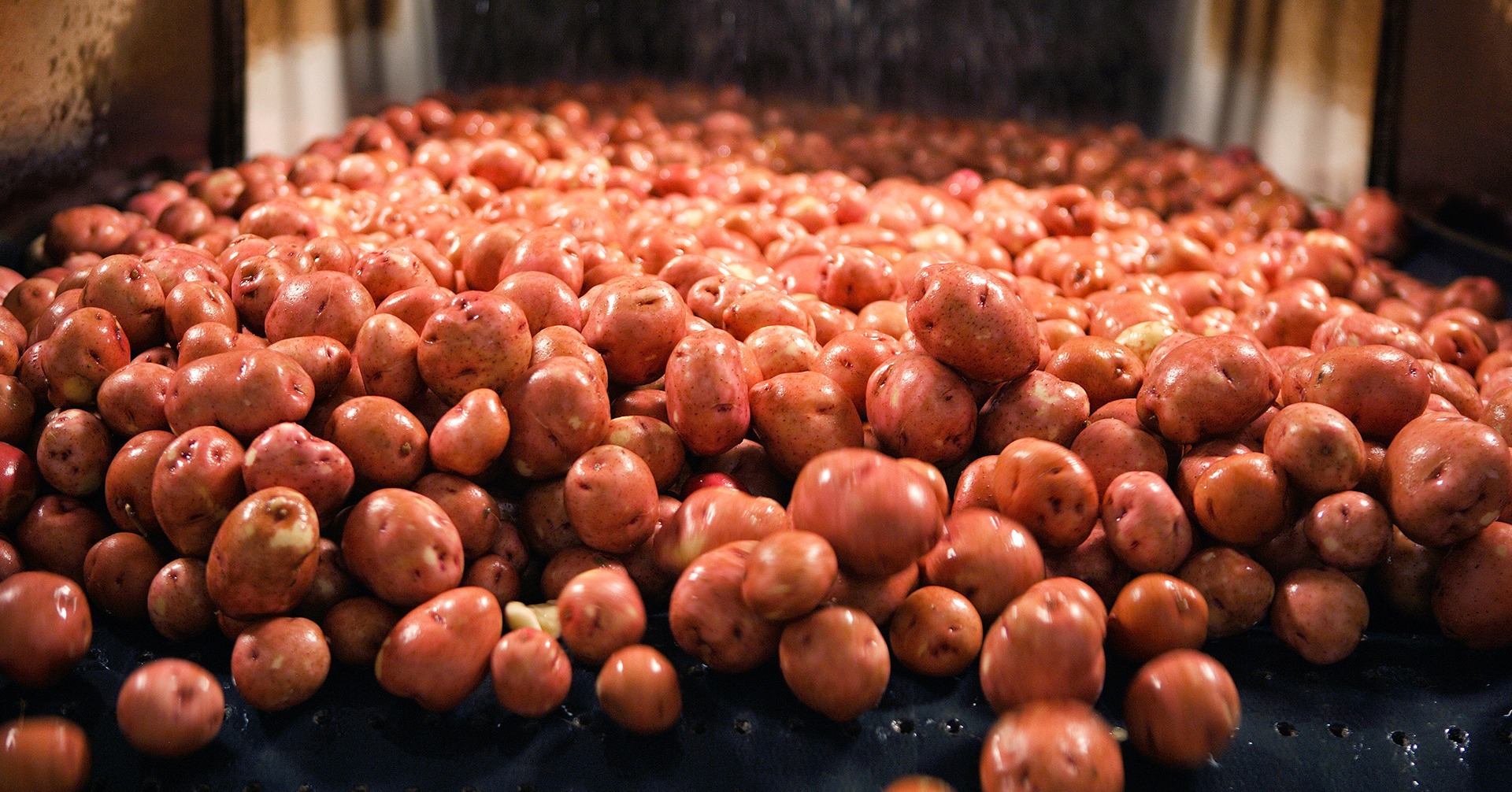2022 saw several food industry trends emerge, from the rise of plant-based diets to increased sustainable initiatives highlighted by COP27 in November last year. So, what does the future have in store for the food and beverage industry in 2023?
In this blog post, we’ll be covering some of the top trends, from the up and coming technology in the food and beverage industry to what today’s consumers expect:
- Sustainable practices are continuing to be a top priority
- Increased interest around healthier foods
- The rise of plant-based diets
- The cost-of-living crisis
- Reducing food waste
- Tightening supply chains
- Wider use of automation
- The use of renewable energy
Top consumer trends
1. Sustainable practices are continuing to be a top priority
With climate change being a hotter topic than ever before, more consumers are striving to support businesses who adopt a sustainable mindset (and shunning those who don’t). In fact, recent research from WRAP found that over 60% of consumers think businesses should be trying to do more to help them reduce their impact on climate change.
A great example of a business incorporating better sustainable practices is Anchor, who create dairy products including milk and butter. In 2022, the company pledged to reduce plastic waste and have developed a 2-litre milk bottle made entirely from sustainably sourced sugarcane!

Supermarket giants Sainsbury’s are also reducing its plastic packaging, removing lids off items such as yoghurts, sour cream, and custard in 2023. In replacement, Sainsbury’s will offer its customers reusable lids which can be purchased for £1.25 across the UK.
From this switch alone, it’s forecasted that it’ll help save 71 million pieces of plastic each year, helping the supermarket achieve its goal of halving plastic in stores by 2025.
Additionally, it’s found that more than half of consumers are willing to pay more for their products if they’re sustainably sourced. By offering, shorter, clearer labels with full transparency about the origin of the ingredients and using biodegradable packaging, you’ll be able to gain new sales opportunities and increase your brand reputation.
2. Increased interest around healthier foods
Consumers are taking more care about what they put into their bodies and are now wanting foods that can deliver multiple things in one bite. Let’s take gut health, where throughout the course of 2022, gut health consciousness rose by 52%.

With this in mind, it’s no wonder that we’re seeing more of these products on supermarket shelves, including kefir, kombucha, and dairy-free yoghurt. Moving forward consumers don’t want food that just looks and tastes good. They’re also looking at the role particular food items play in promoting good health and wellbeing.
Additionally, we’ve seen changes in the past year as to how consumers want their food to be cooked. Waitrose in their annual food and drink report found that air fryers were up by 56% on John Lewis compared to 2021. Air fryers are not only seen as cheap to run, but they also use less oil to cook, promoting better health and wellbeing.
KP Snacks have successfully adapted to this trend with its new Popchips brand, advertising them as a healthy, air popped alternative to normal crisps. So, if you’re looking to rejuvenate your sales and regain a competitive edge, consider if functional foods might be your way in.
3. The rise of plant-based diets
The plant-based industry continued on an upward trajectory in 2022, with a recent survey finding that approximately 7.2 million adults in the UK are currently following a vegan diet. Here are a few reasons why the growth of the plant-based market is likely to continue well into 2023 and beyond:
- Plant-based food to go is becoming increasingly popular – as highlighted by last years Food To Go Conference, many fast food giants are incorporating vegan ranges, such as McDonald's with its McPlant burger and Burger King with its Impossible Burger. With 34% of food to go customers now more likely to be flexitarian, there's no better time for food manufacturers to jump onto the plant-based trend

- More manufacturers are boasting about their vegan credentials – last year, 27% of new products on shelves were labelled as vegan or free from animal ingredients, and recent research suggests that a plant-based lifestyle is viewed as ‘entirely normal’
- Increased awareness around environmental concerns and climate change – we’re now seeing more consumers switch their diet due to concerns over their own impact towards the environment
In our plant-based infographic, we dive deeper into the latest trends driving the plant-based industry, and how food manufacturers can become more resilient to overcome the several challenges facing the industry today. Download it below.
4. The cost-of-living crisis
Amidst spiralling inflation rates, businesses across all industries are under increasing pressure to offer products that are both good quality and affordable. With two in five Britons struggling with their food budgets, this suggests that consumers will continue to seek ways they can minimise their spending on essentials. So, how you can you deal with the cost of living crisis? You should:
- Build on your supplier relationships – see where you can negotiate better deals with your current contracts
- Review your monthly costs – technology lets you monitor inventory levels in real time, helping you reduce food waste which can become costly towards food businesses
- Review your current products profitability – food-specific data and insights software will allow you to accurately predict your items future profitability, so you can enhance your decision making as to whether you should discontinue certain ranges

Process and technology trends
5. Reducing food waste
With over 60% of food and drink businesses being affected by increased energy costs, reducing waste can help you save on operating costs. . For example, if you’re over or under ordering on particular ingredients, not only are you missing out on opportunities to optimise production processes, but you’ll also be wasting energy within your operations.
Technology such as automation, AI and machine learning can improve production efficiency and output. This allows you to better track ingredients across production lines so you can accurately predict when you need to reorder stock which, in turn, improves cost efficiency.

Additionally, we’re now seeing food businesses using innovative ways of disposing their food waste. With emerging apps such as TooGoodToGo, you can reduce your environmental impact and benefit your consumers by offering food which would’ve previously been wasted at a discounted rate.
You can find out more tips about reducing your food waste here.
6. Tightening supply chains
The recent surge in demand for energy, labour and transport has placed significant pressures on just-in-time ordering, cross-border supply chains that keep factories open and shelves stocked. With supply chain problems set to continue well into 2023, a key focus for food businesses will be tightening their operations.

Some ways you can do that include:
- Being flexible with your sourcing and distribution strategies (like Kellogg’s, who managed to quickly source a new supplier closer to home)
- Modernising your manufacturing operations (think along the lines of a smart, connected factory, access to real-time data and full visibility)
Find out more here.
7. Wider use of automation
From labour shortages, disrupted supply chains, and ongoing strikes in the food and beverage industry, automation should be a key priority to maintain consumer trust and avoid potential labour shortages.

Here are some ways that automation software can support your operations:
- Improved quality control - when processes are automated, errors and defects can be identified, isolated, and resolved more quickly
- Increased food safety - you can gain a more granular view of your food manufacturing processes and ensure one process change won’t cause adverse consequences in another
- Enhanced traceability - as soon as a product/ingredient enters your supply chain, it can be automatically scanned, and its data entered into your food solution. Not only does this reduce the risk of human error, but it also ensures end-to-end traceability which can improve supply chain management
You can read more into the benefits of automation by clicking here.
Just make sure your team understands they’re not going to be replaced by robots or machines. In fact, these machines will handle the repeatable processes, improving quality, efficiency and freeing up more time for workers to focus on the more fulfilling tasks.
8. The use of renewable energy
Due to the heightened awareness around climate change and global warming, from goals set out by the UN to consumers becoming more climate-conscious, food manufacturers need to do more to reduce the emissions they produce.
For example, confectionary manufacturer Mars Wrigley has opened its first 100% renewable energy ice cream factory, which is expected to save up to 600 tonnes of CO2 a year, helping the company achieve its net zero emissions target for 2050. By using and investing in renewable energy for your operations, this can protect your brand reputation whilst simultaneously reducing costs in the long run.

Find out how one of our customers innovated and modernised its core processes
Keeping up with trends is one thing but if you truly want to futureproof your operations, you need to be looking at innovative ways to make your products exciting, unique and enticing.
One of our customers Jacksons Bakery, the UK’s leading supplier of sandwich bread, were able to innovate their operations with new technology that modernised its core processes.
Read how Jacksons gained new efficiencies, from eliminating manual errors to increasing its agility, in the case study below.


